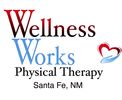Functional Dry Needling in Physical Therapy
Dry Needling involves the insertion of a thin filament needle to stimulate the healing process of soft tissues (muscle “trigger points”, fascia, tendons and ligaments, etc.) resulting in pain relief and restoration of healthy physiology.
A myofascial “trigger point” is a hyperirritable point in skeletal muscle that is associated with a hypersensitive palpable nodule or knot. This area becomes painful at the site and can also radiate in predictable patterns.
Dry needling works by changing the way your body sense pain and by helping the body heal stubborn muscle spasms associated with trigger points. There are additional electrical and chemical changes associated with dry needling therapy which assist in the treatment of the healing process. It is important to recognize the needles as just one part of your overall rehabilitative treatment. It is vital that you do the exercises and follow the advice your physical therapist gives you in conjunction with this therapy tool for optimal recovery.
Contrary to what some may believe, the objectives and philosophy behind the use of dry needling by physical therapists is not based on ancient theories or tenets of traditional Chinese medicine. The performance of modern dry needling by physical therapists is based on western neuroanatomy and modern scientific study of the musculoskeletal and nervous systems.
Generally, the insertion of the needle is not felt. The local “twitch response” may provoke a brief pain sensation that has been described as tingling, aching, or a cramping sensation. Side effects vary among individuals. Typically, only mild muscle soreness or skin bruising can occur.
Dry Needling involves the insertion of a thin filament needle to stimulate the healing process of soft tissues (muscle “trigger points”, fascia, tendons and ligaments, etc.) resulting in pain relief and restoration of healthy physiology.
A myofascial “trigger point” is a hyperirritable point in skeletal muscle that is associated with a hypersensitive palpable nodule or knot. This area becomes painful at the site and can also radiate in predictable patterns.
Dry needling works by changing the way your body sense pain and by helping the body heal stubborn muscle spasms associated with trigger points. There are additional electrical and chemical changes associated with dry needling therapy which assist in the treatment of the healing process. It is important to recognize the needles as just one part of your overall rehabilitative treatment. It is vital that you do the exercises and follow the advice your physical therapist gives you in conjunction with this therapy tool for optimal recovery.
Contrary to what some may believe, the objectives and philosophy behind the use of dry needling by physical therapists is not based on ancient theories or tenets of traditional Chinese medicine. The performance of modern dry needling by physical therapists is based on western neuroanatomy and modern scientific study of the musculoskeletal and nervous systems.
Generally, the insertion of the needle is not felt. The local “twitch response” may provoke a brief pain sensation that has been described as tingling, aching, or a cramping sensation. Side effects vary among individuals. Typically, only mild muscle soreness or skin bruising can occur.
Self pay 55 minute dry needling consultation and treatment 160$
Self pay 30 minute session 85$
cash or check only
Self pay 30 minute session 85$
cash or check only
For more information please discuss with your physical therapist and check out these links:
en.wikipedia.org/wiki/Dry_needling
www.apta.org/StateIssues/DryNeedling/
needling_powerpoint_.key
en.wikipedia.org/wiki/Dry_needling
www.apta.org/StateIssues/DryNeedling/
needling_powerpoint_.key
Wellness Works Physical Therapy, LLC
404 Brunn School Rd. Suite D
Santa Fe, NM 87505
Office: (505) 983-0670
Fax : (505) 983-0118
Email: wellnessworkspt@gmail.com
404 Brunn School Rd. Suite D
Santa Fe, NM 87505
Office: (505) 983-0670
Fax : (505) 983-0118
Email: wellnessworkspt@gmail.com
